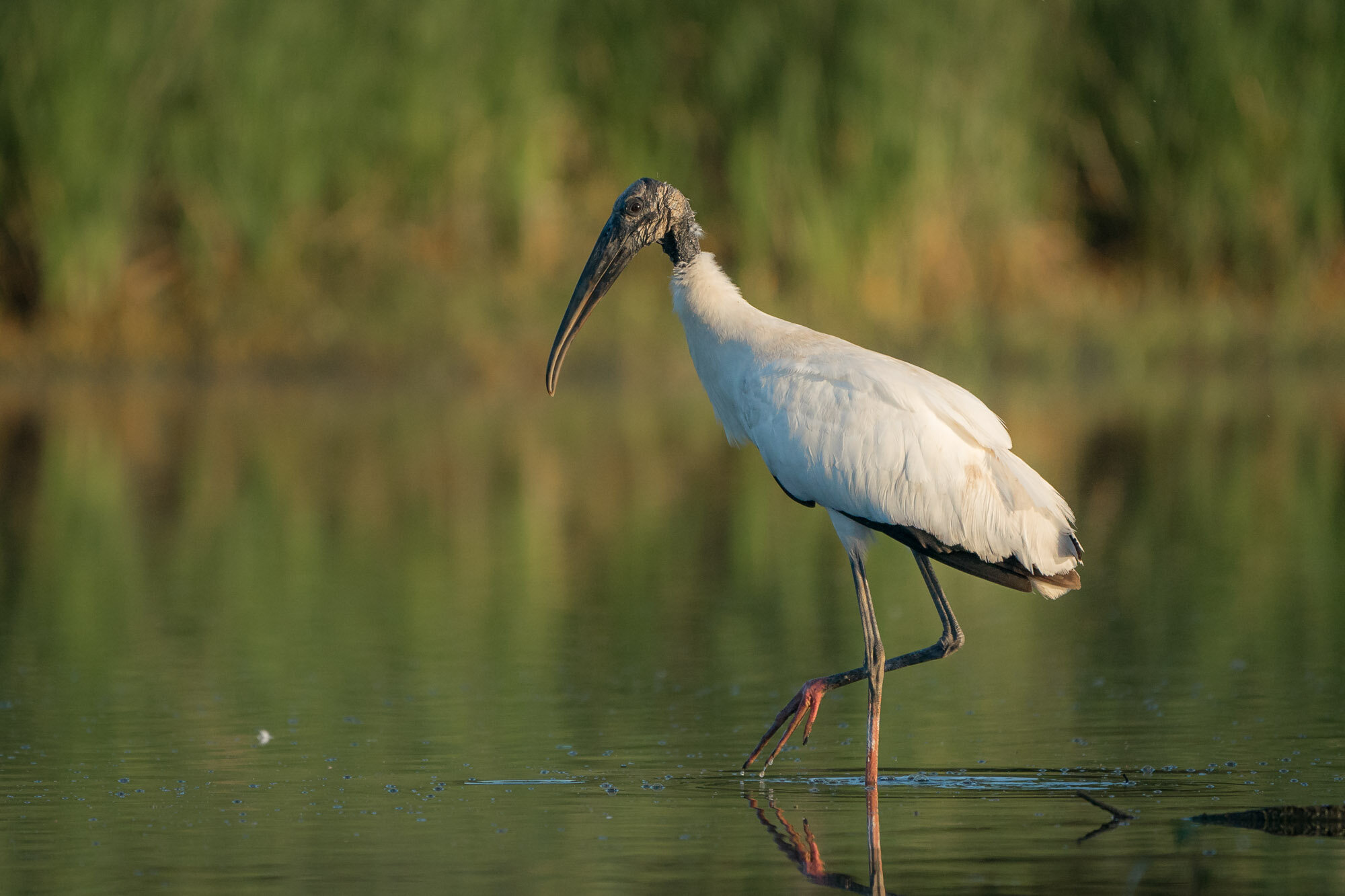Wood Storks
Wading Wood Stork Photo by Gary Seloff
Written by Mark Kramer
On rare occasions, a special winged visitor passes through the tidal wetlands of Armand Bayou. With a five-foot wingspan, it’s surprising that few have ever seen it. As someone who has spent a lifetime on the bayou waters, I can count on one hand my sightings of wood storks (Mycteria americana). Last week, Gary Seloff captured a great image of a small group of the birds in Horsepen Bayou.
Wood storks use Armand Bayou briefly as a “stop over” point in their travels. My observations typically see them here for only a day or two as they travel onward after dispersing from their Mexican breeding grounds. Years may go by without a sighting. However, I suspect that the birds stop every year without being seen in their remote bayou wetland layover.
Wood Stork In Flight Photo by Gary Seloff
Wood storks seem to do most actions in slow motion. They soar in spiral perfection at great altitude and I often look up two or three times to convince myself that what I see are actually storks and not white pelicans. Wood storks are wading birds which use their heavy bill to dredge the soft sediments with a “grope feeding technique” and feel their way to dinner. This feeding technique also enables nocturnal feeding which may explain why the birds are seldom seen wading in Armand Bayou waters. Their feeding habitat is very specific and requires shallow pools of concentrated prey. Just like those areas created by years of tidal marsh and tidal flats restoration in Horsepen Bayou. Dinner is easier for those who have little preference. Fish (especially mullet) compose the vast majority of the menu with shrimp, snakes, juvenile alligators, and crabs also on the tidal flats buffet.
Wood stork sightings are not rare just on Armand Bayou. Their population in the United States has declined by seventy five percent since the 1930’s. Experts theorize that dredging, draining, and water manipulation in Florida altered the Everglades hydrology of seasonal dry periods which concentrated prey of the wood stork during nesting period. Current best estimates are that only eight thousand nesting pairs remain in Florida. American wood storks were listed as an Endangered Species in 1984. Similar declines in the Mexican population had them listed as endangered in 1991.
All of my wood stork sightings have been birds perched high in roosting areas. My notes show a memorable sighting in 2008 where an estimated eighty birds in upper Armand Bayou perched for the evening. This week’s sighting by Gary counted only three birds. As an animal’s population plummets, it puts a different context on each viewing experience. As a species disappears from an area, so does the richness of human experience – an extinction of experience for all. And with every sighting of the wood stork I ask myself, will this be the last?


